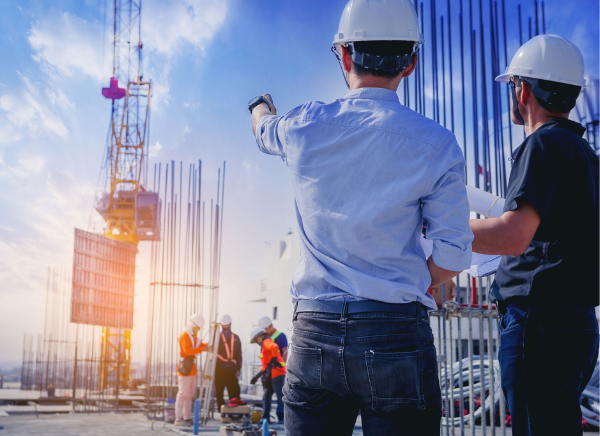

Join Rabab Zehra as she moderates a compelling discussion at Bentley Systems’ Year in Infrastructure and Going Digital Awards event in Singapore. Delve into the dynamic realm of structural engineering with insights from Josh Taylor and Jana Miller. They explore resilience, sustainability, and the infusion of AI, shedding light on how these elements are redefining the industry. This conversation offers a glimpse into the evolving landscape of structural engineering, guided by the expertise of these industry leaders.
Let’s delve into the increasing significance of resilience and sustainability in structural engineering. Could you please elaborate on this?

Josh Taylor
Absolutely, there’s a noticeable shift in the importance of resilience and sustainability, which is reflected in evolving code standards. As the structural engineering community adapts, we see this reflected in the development and adoption of design standards that become legally binding. For example, we’re witnessing a trend toward performance-based design for wind resistance.
This approach, not entirely new and used in earthquake design, focuses on going beyond merely ensuring structural survival during natural disasters. Instead, it aims to set performance levels, such as ensuring a building can be reoccupied immediately after an event, reducing the need for extensive repairs. Furthermore, for the first time, the International Building Code is incorporating tornado loads into its design standards, acknowledging the impact of extreme weather events. This signifies a growing need for higher design standards in the face of such challenges. To assist engineers in designing for resilience, our Athena software considers post-damage scenarios, enabling comprehensive analysis and informed decision-making.
Moving on to sustainability, especially efforts to reduce carbon emissions, what challenges are engineers encountering, and how are they addressing them?
Josh Taylor: Engineers are increasingly focused on sustainability by striving to use fewer materials, particularly steel and concrete, which are major contributors to carbon emissions. We see this emphasis on material efficiency in the submissions for the YII Awards and recent projects. Engineers are conducting more detailed assessments, leveraging advanced software features, and creating elaborate simulations to better understand structural behavior. They are moving away from oversimplified approaches and opting for in-depth problem analysis. Moreover, they are exploring alternative materials and framing systems, such as recycled materials and modular construction, to build structures more efficiently while minimizing material usage.
Can you shed some light on Bentley’s advancements in the field of structural engineering this year?
Josh Taylor: This year, Bentley has made significant strides in our software offerings. We’ve transitioned to yearly-based releases, such as STAAD Pro 2023, which is accompanied by a maintenance and security policy defining support for each release. We’re also integrating cloud computing more deeply into our software, allowing engineers to run simulations and analyses on the cloud for faster and more robust results. These cloud-based solutions significantly speed up computations that used to take hours or even days. Additionally, we’ve taken the step of providing users with the verification and testing processes we conduct before releasing new versions. This ensures that our users can quickly and confidently transition to the latest software, saving them valuable time and enhancing their experience.
With the pervasive influence of AI, especially generative AI, how do you foresee the evolution of structural engineering in the coming years?
Josh Taylor: AI can play a crucial role in streamlining the initial stages of structural design, allowing engineers to reach a more advanced starting point efficiently. Instead of having engineers create structures from scratch and apply loads manually, AI can assist in generating designs up to 70% completion. This enables engineers to focus on fine-tuning and optimizing the design, gaining a deeper understanding of how the structure behaves under different conditions. Importantly, AI won’t replace human decision-making in the design process; it will enhance it. Engineers will always have the final say in critical decisions. AI’s role is to assist and expedite the early stages of design, making engineers’ work more efficient and valuable.

Jana Miller:
This approach enables engineers to allocate their time more effectively, focusing on the critical aspects of a project rather than spending excessive time on initial design stages. It empowers them to make informed decisions while retaining their essential role in the design process.
